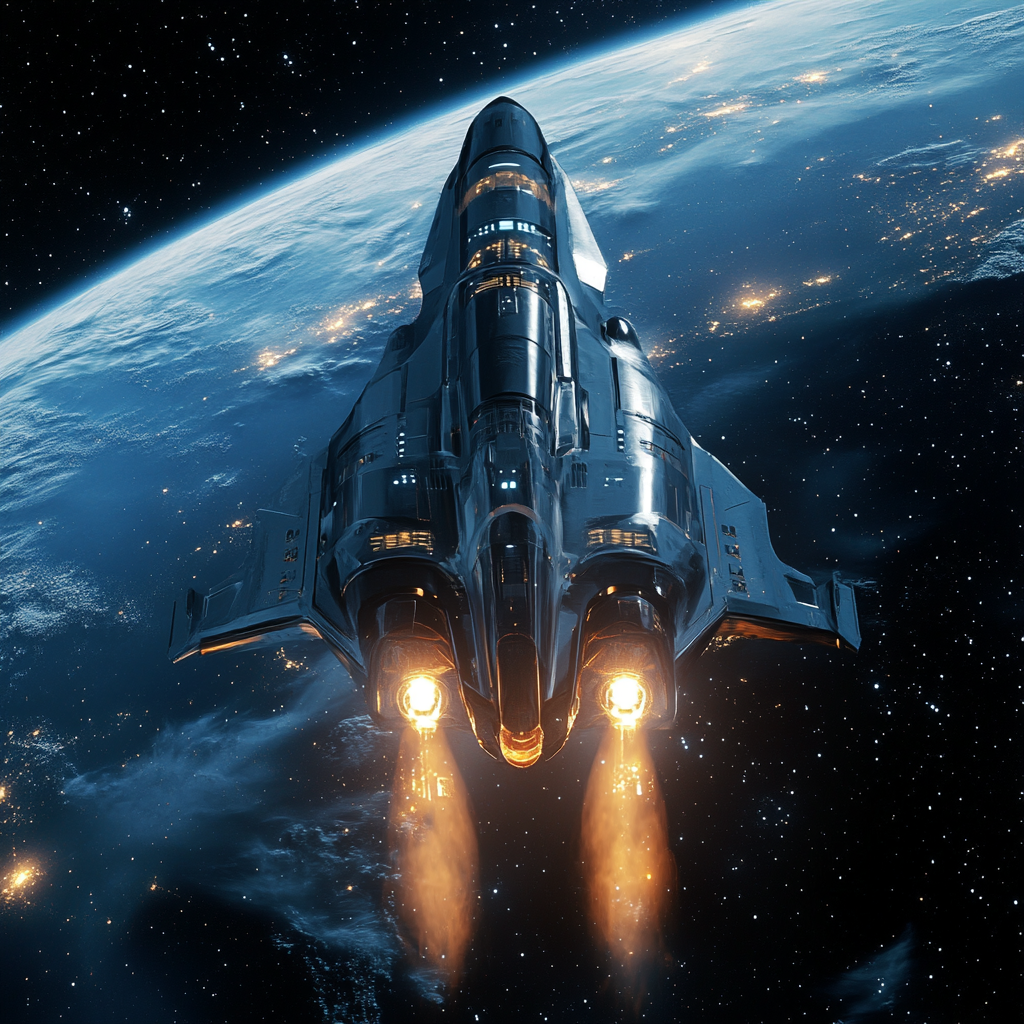
ULA Plans to Transform Vulcan Centaur Rocket for Satellite Defense
In the grand theater of the cosmos, where the drama of space exploration and defense unfolds daily, something intriguing is brewing. The United Launch Alliance (ULA), with its iconic Vulcan Centaur rocket, is stepping up its game with a bold vision: transforming this rocket into what can only be described as a "space interceptor." Picture this—no longer just a vehicle for launching satellites into the great beyond, but a fully-fledged defender of our celestial assets. Curious? Let’s delve into the thrilling details of this ambitious plan, as ULA’s CEO Tory Bruno plays the lead role in this aerospace adventure.
At the core of ULA's vision is the Centaur V upper stage. It’s not just an afterthought—it’s the Hercules of the Vulcan Centaur, set to pack more than double the punch of its predecessor. Don’t underestimate the current capabilities; even as is, the Centaur V can gallop through space, holding its ground in orbit for a notable twelve hours. But here’s where the plot thickens: ULA aims to push this duration to days, maybe even weeks. That's right. Imagine the possibilities of having a spacecraft that isn’t just a spectator in the cosmic arena but one that can actively participate in extended missions, engaging with the mystery and challenges of space.
Now, let’s talk about the concept of a "space interceptor." While the name sounds like something out of a sci-fi novel, its implications are grounded in the serious realities of modern threats looming in the celestial tapestry. Bruno envisions a squadron of ultra-fast, long-range interceptors—akin to the naval destroyers we’re familiar with on Earth, but operating in the ether of space. This isn’t just fancy talk; it’s about creating a fleet of nimble platforms that can pivot and react to threats with the precision of a hawk diving towards its prey.
This endeavor is particularly critical when you consider that existing satellites, often clumsily dubbed "satellite killers," are burdened with the same sluggishness as a tortoise in a sprinting contest. Intrusive threats can meander around in orbits like they own the place, whereas our current guardians take what feels like an eternity to respond. Enter the Vulcan Centaur, poised to revolutionize the game with the ability to launch and intercept targets in a time frame that would make the current defenders look like they're stuck in molasses.
But the road ahead is not without its bumps. ULA is opting for a starkly practical approach, making incremental upgrades to the Centaur V. The plan is not a headlong dash with bulldozers—a few tweaks, a couple of test launches here and there, all leading to a robust validation process. This means when ULA announces a new upgrade, rest assured it’s been rigorously tested in space; they’re not throwing spaghetti on the wall to see what sticks.
Of course, this ambition springs from a rapidly evolving threat landscape where international rivalries can shift like the winds of Jupiter. The escalating activities from space powers, notably China and Russia, have lit a fire under the U.S. Space Force, urging it to arm its celestial sentinels with the versatility to tackle new-age threats. The Vulcan Centaur's upgrades symbolize not just a platform but a strategic necessity in this competitive cosmic chess game.
Yet amid these ambitious plans lies the colossal task of differentiating ULA in a market where SpaceX is squarely in the limelight. In a world inclined to favor cost over capability, ULA contemplates the necessity of fostering unique attributes amongst launch providers. The mantra here is clear: well-rounded capabilities often trump the race to the bottom on pricing. It’s a delicate balancing act, one where ULA hopes to inject distinction into its offerings, but that’s a conversation for another day.
So, what does this mean for the future? If ULA succeeds, we could witness a new era of American dominance in space, where craft do more than just survive—they thrive and defend. The vision for a future where the Vulcan Centaur morphs into a defender of our satellites is not merely a tactical upgrade; it’s a pivotal adaptation to ensure U.S. interests in an arena that’s fast becoming a battlefield. Challenges will undoubtedly materialize along the way, like delays in the Vulcan’s original rollout and the steady encroachment by its competitors, but the stakes have never been higher.
As we peer into this future filled with galactic possibilities, ULA’s aspirations for the Vulcan Centaur as a space interceptor ring louder than the engines of a rocket post-launch. The evolution of space into a contested domain isn’t just a plot twist; it’s the new normal.
Want to stay up to date with the latest news on space technology and defense? Subscribe to our Telegram channel: @channel_neirotoken
In the wise words of Tory Bruno, “To keep the peace, we also must have a credible space defense.” The trajectory is clear, and the countdown is on—are you ready for liftoff into the world of space defense innovations?

